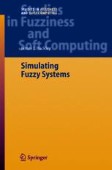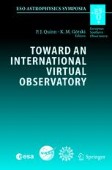Search
Search Results
-
Priority Queues
This chapter will use the queuing system in Chaps. 5 and 9, but with priority orders. The system is shown in Fig. 19.1. Everything is the same as in...
-
Hierarchical Bayesian Optimization Algorithm
The previous chapter has discussed how hierarchy can be used to reduce problem complexity in black-box optimization. Additionally, the chapter has...
-
Optimizing a Production Line
The simple production line considered in this chapter is shown in Fig. 20.1. This problem has been adapted from an example in [1]. This situation is...
-
Queuing I: One-Step Calculations
In this chapter we show situations where simulation can produce the same results as fuzzy calculations which employ the extension principle. We argue...
-
Simulation Programs
In this chapter we present some of the GPSS programs used in Chaps. 9–26. We had to omit many programs in order to keep this chapter. less that 20...
-
Queuing II: No One-Step Calculations
In this chapter we will study the fuzzy system shown in Fig. 5.1 now reproduced as Fig. 9.1. This example was adapted from an example in [1]. The...
-
Fingerprint Recognition with Modular Neural Networks and Fuzzy Measures
We describe in this chapter a new approach for fingerprint recognition using modular neural networks with a fuzzy logic method for response...
-
Modular Neural Networks
We describe in this chapter the basic concepts, theory and algorithms of modular and ensemble neural networks. We will also give particular attention...
-
Type-1 Fuzzy Logic
This chapter introduces the basic concepts, notation, and basic operations for the type-1 fuzzy sets that will be needed in the following chapters....
-
Human Recognition using Face, Fingerprint and Voice
We describe in this chapter a new approach for human recognition using as information the face, fingerprint, and voice of a person. We have described...
-
Project Network Model
The project network diagram is in Fig. 26.1. This problem is modelled after an example in [2]. The project consists of various jobs that must be...
-
Simulation
Now we come to the point were we need to select simulation software to do all the crisp simulations staring in Chap. 7. The author is not an expert...
-
Fuzzy Estimation
sThe first thing to do is explain how we will get fuzzy numbers, and fuzzy probabilities, from a set of confidence intervals which will be...
-
Voice Recognition with Neural Networks, Fuzzy Logic and Genetic Algorithms
We describe in this chapter the use of neural networks, fuzzy logic and genetic algorithms for voice recognition. In particular, we consider the case...
-
Application of Evolutionary Algorithms to Global Cluster Geometry Optimization
This contribution focuses upon the application of evolutionary algorithms to the nondeterministic polynomial hard problem of global cluster geometry...
-
Prediction of Crystal Structures Using Evolutionary Algorithms and Related Techniques
Methods, evolutionary and systematic search approaches, and applications of crystal structure prediction of closest-packed and framework materials...
-

-
Nineteenth and Twentieth Century Clouds Over the Twenty-First Century Virtual Observatory
Physical science has changed in the century since Lord Kelvin’s celebrated essay on Nineteenth Century Clouds over the Dynamical Theory of Heat and...
-
Statistical Analysis of Observed and Simulated Surveys
The statistical analysis of large astronomical datasets requires also application of powerful fast codes and corresponding basic models. Some...
-
Star-Forming Regions at High Resolution: Interferometry for Virtual Observatories
Star forming regions must be studied in 3-D with resolutions from milli-arcseconds to degrees, to understand the birth of stars and planets and the...
